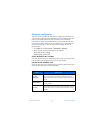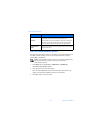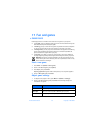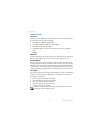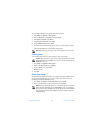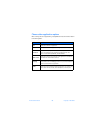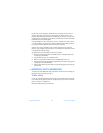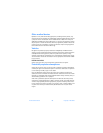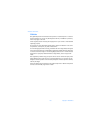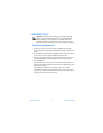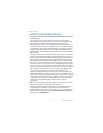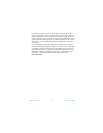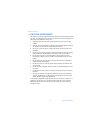Nokia 3595 User Guide 137 Copyright © 2003 Nokia
Do not short-circuit the battery. Accidental short-circuiting can occur when a
metallic object (coin, clip, and pen) causes a direct connection of the + and -
terminals of the battery (metal strips on the battery), for example, when you carry
a spare battery in your pocket or purse. Short-circuiting the terminals may damage
the battery or the connecting object.
Leaving the battery in hot or cold places, such as in a closed car in either summer
or winter conditions, will reduce the capacity and lifetime of the battery. Always
try to keep the battery between 59°F and 77°F (15°C and 25°C).
A phone with a hot or cold battery may not work temporarily, even when the
battery is fully charged. The performance of Li-Ion batteries is particularly limited
in temperatures below 32°F (0°C).
The following list provides guidelines that you can follow:
• When the operating time (talk and standby time) is noticeably shorter than
normal, buy a new battery.
• Use the battery only for its intended purpose.
• Never use any charger or battery that is damaged and/or worn out.
• Dispose of batteries according to local regulations (for example, recycling). Do
not dispose of as household waste.
• When you disconnect the power cord of any accessory, grasp and pull the plug,
not the cord.
• IMPORTANT SAFETY INFORMATION
This section provides additional safety information. A brief overview of safety can
be found in “For your safety” on page1.
Traffic safety
Do not use a handheld telephone while driving a vehicle. Always secure the phone
in its holder; do not place the phone on the passenger seat or where it can break
loose in a collision or sudden stop.
Remember road safety always comes first!



